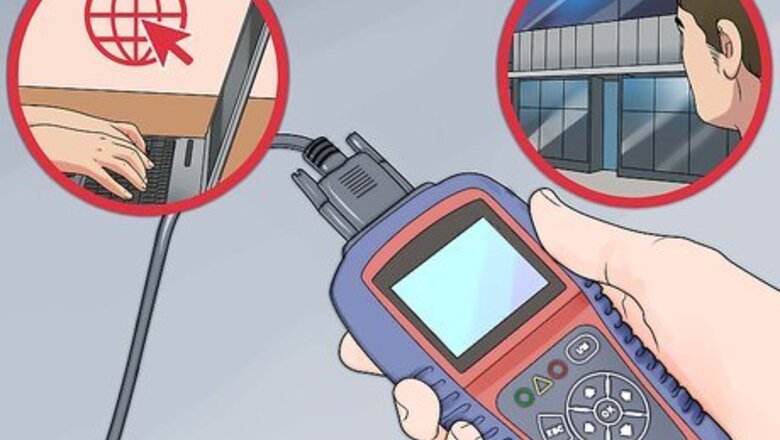
views
Getting the Codes
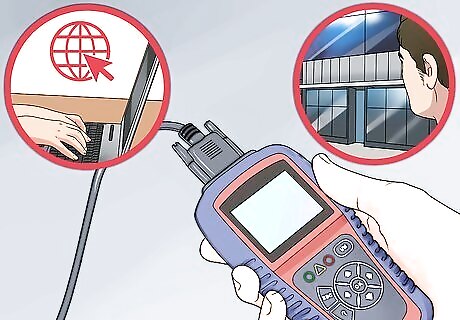
Obtain an OBD-II scan tool. You can find OBD-II scan readers at many online and auto-parts stores. If you have a Bluetooth-enabled smartphone, you can download an app to interpret the data and purchase an OBD reader that will display the codes and explanations directly on your device. If your car/light truck is older than 1996 you will need to purchase an OBD-I scanner which are more vehicle specific and do not use the universal OBD-II coding system. This article concentrates on the OBD-II system. OBD-II constantly monitors the performance of your engine and Emissions Control System. It will turn on your Check Engine Light whenever a malfunction occurs that causes the vehicle produced emissions to be greater than or equal to 150% of the Federal EPA mandated limits.
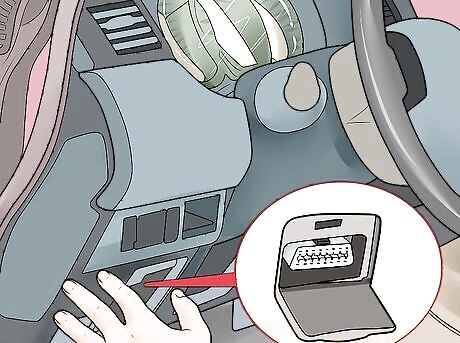
Locate the Diagnostic Link Connector (DLC) in your vehicle. This is a somewhat triangular shaped 16-pin connector that is commonly located underneath the left hand side of the dash near the steering column. If you have trouble locating the DLC, search for the location on the internet using your car’s model and year, or refer to the owner’s manual.
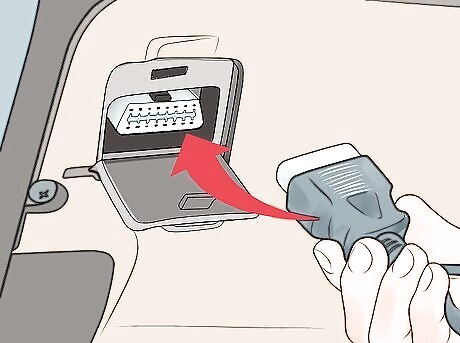
Insert the scan tool connector or code reader into the DLC. Turn your ignition on, but do not start your engine. You will see the scanner begin to communicate with the onboard computers in your vehicle. Messages like "searching for protocol" and "establishing data transmission link" may appear on the scanner's screen. If the screen stays blank and does not light up, jiggle the connector to achieve a better contact between the scanner and DLC connector pins. Older cars in particular may have poorer connections. If you still aren't having any luck, be sure that your cigar lighter works. This is because the OBD-II system uses the cigar lighter circuit to provide voltage to the DLC. If the cigar lighter does not work, locate and check the appropriate fuse.
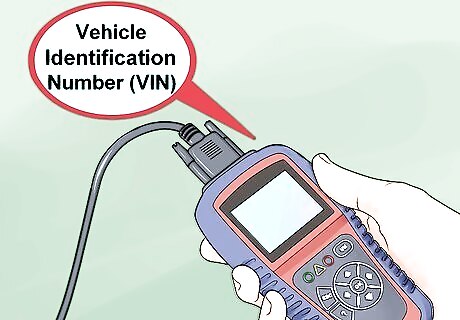
Enter in your vehicle information. On some scanners, you will need to input your VIN as well as the make and model of the vehicle. You may also need to specify the engine type. This process will vary depending on the scanner. You can usually find your VIN number on the bottom-left hand side of the windshield. VIN numbers are typically stamped on every single part of newer cars.
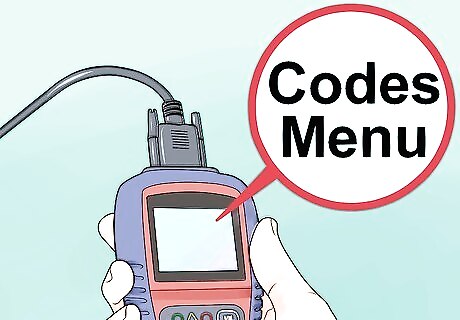
Find the menu. When the scanner finishes booting up, look for a menu. Select “Codes” or “Trouble Codes” to open the main Codes menu. Depending on your scanner and year of the vehicle you may be presented with a few systems such as Engine/Powertrain, Transmission, Airbag, Brakes etc. When you pick one, you will see two or more types of codes. The most common are Active codes and Pending codes. Active codes are live codes or malfunctions that are keeping your Check Engine Light on. Just because your Check Engine Light is off doesn't mean the code or malfunction disappeared, it just means that the code setting conditions haven't occurred for two or more operations of the vehicle. Pending codes mean that the OBD-II monitoring system has failed the operation of an emission control system at least once and if it fails again the Check Engine Light will be turned on and the malfunction becomes an Active code.
Understanding the Codes
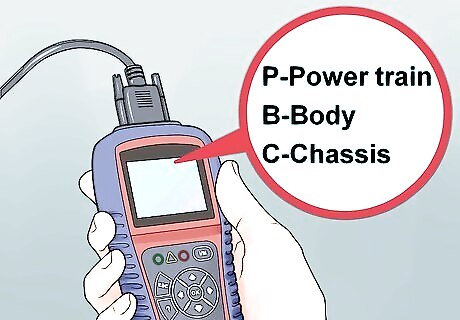
Learn what the letter means. Each code will start with a letter which designates what system the code is referring to. There are several letters that you may see, though you may have to move to different menus to see them: P - Powertrain. This covers the engine, transmission, fuel system, ignition, emissions, and more. This is the largest set of codes. B - Body. This covers airbags, seat belts, power seating, and more. C - Chassis. These codes cover ABS, brake fluid, axles, and more. U - Undefined. These codes cover other aspects of the car.
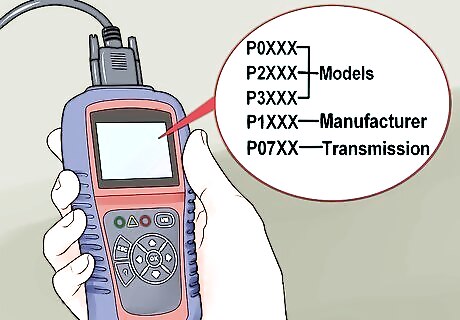
Learn what the numbers mean. P0xxx, P2xxx, and P3xxx are all generic codes that apply to all makes and models. P1xxx codes are manufacturer specific, such as Honda, Ford, Toyota, etc. The second number tells you what subsystem the code refers to. For example, P07xx codes refer to the transmission. The last two digits are the specific problem that the code refers to. Check a code chart online for details on each specific code.
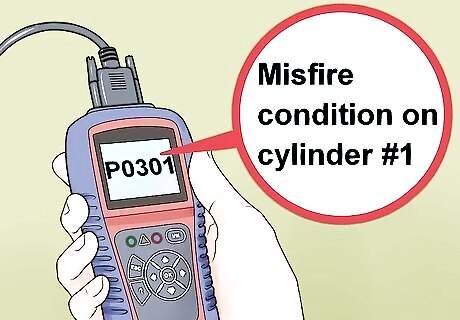
Read an example code. P0301 indicates a misfire condition on cylinder #1. The P indicates it's a powertrain code, the 0 indicates that it is a generic or universal code. The 3 means the area or subsystem is an Ignition System code. The 01 indicates it's a cylinder specific problem, in that there is a misfire condition in the number 1 cylinder. It could mean that the spark plug, plug wire or dedicated ignition coil are worn out or that there is a vacuum leak near the cylinder. A code does not tell you what component is defective; it only points to or indicates that a component, its circuit, or its wiring/vacuum control are malfunctioning. The code may be the symptom of a malfunction caused by a completely different system.
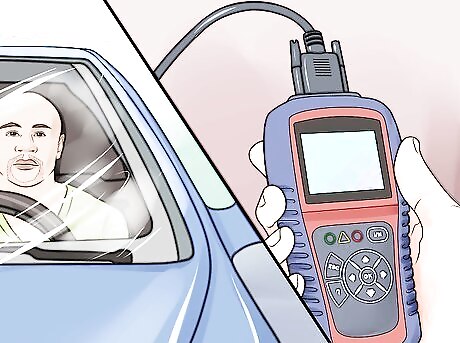
Diagnose your vehicle. The proper diagnosis of OBD-II codes takes years of training and practice. For example, a weak battery or worn out alternator can set five or more codes in systems that are perfectly normal. Before attempting repairs, understand that the codes alone will not tell you what parts need to be replaced or what repairs need to be made. If you are unsure of what you are doing, take your car to an ASE Certified Master Technician with the L1 Advanced Engine Performance Diagnostic certification, or you could end up wasting a lot of time and money.
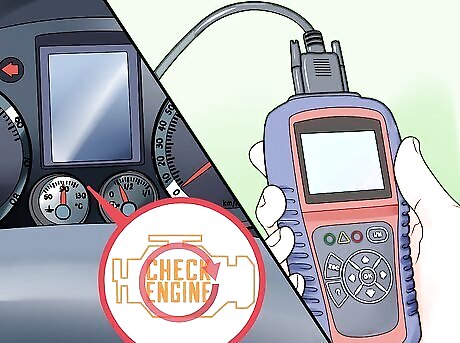
Reset your Check Engine Light. If you’ve made your repairs, or simply don’t want to see your Check Engine Light for a while, you can reset it using most OBD scanners. The light will turn off until the car has been driven a certain amount of time (this varies from manufacturer to manufacturer). You can reset the Check Engine Light from the main menu of most scanners. It is also referred to as a CEL.




















Comments
0 comment